Antiprotozoals are agents used to treat protozoan infections. Protozoan infections are common in tropical areas. Protozoans are single-celled organisms that pass through several stages in their life cycles, including at least one phase as a human parasite. While protozoans thrive in tropical climate, they may also survive and reproduce in any area where people live in very crowded and unsanitary conditions.
Table of Contents
- Antiprotozoal Drugs: Generic and Brand Names
- Disease Spotlight: Protozoal Diseases
- Antimalarials
- Other Antiprotozoal Agents
- Practice Test: Antiprotozoal Agents
- Recommended Resources
- See Also
- References and Sources
Antiprotozoal Drugs: Generic and Brand Names
Here is a table of commonly encountered antiprotozoals, their generic names, and brand names:
- Antimalarials
- chloroquine (Aralen)
- mefloquine (Lariam)
- primaquine
- p[yrimethamine (Daraprim)
- quinine (Qualaquin)
- Other antiprotozoals
- atovaquone (Mepron)
- metroniadazole (Flagyl)
- nitazoxanide (Alinia)
- pentamidine (Pentam 300)
- tinidazole (Tindamax)
Disease Spotlight: Protozoal Diseases
Malaria
- It is a disease characterized by a cycle of fever and chills transmitted through a bite of a female Anopheles mosquito. Identified causes include Plasmodium falciparum, vivax, malariae, and ovale. Malaria is endemic in many parts of the world.
- Sporozoites travel through bloodstream and become lodged in the liver and other tissues.
Amebiasis
- It is an intestinal infection caused by Entamoeba histolytica. It is often known as amoebic dysentery. The disease is transmitted through fecal-oral route.
- Amebiasis is characterized by mild to fulminant diarrhea. In worst cases, it is able to invade extraintestinal tissue.
Leishmaniasis
- Is a disease caused by a protozoan that is passed from sand flies to humans. It is characterized by serious lesions in the skin, viscera, and mucous membranes of host.
Trypanosomiasis
- Is caused by Trypanosoma leading to African sleeping sickness and Chagas’ disease.
- African sleeping sickness is caused by T.brucei gambiense and is transmitted by tsetse fly. It is characterized by lethargy, prolonged sleep, and even death.
- Chagas’ disease is caused by T.cruzi and is passed to humans by common housefly. It is characterized by severe cardiomyopathy.
Trichomoniasis
- Is caused by T.vaginalis, a common cause of vaginitis (reddened, inflamed vaginal mucosa, itching, burning, and yellowish-green discharge).
- It is usually transmitted through sexual intercourse.
- Asymptomatic in men
Giardiasis
- Is caused by G.lamblia, the most commonly diagnosed intestinal parasite in the United States.
- Transmission is through contaminated water or food, and trophozoites.
- Characterized by diarrhea, rotten egg-smelling stool, and pale and mucus-filled stool. Some patients experience epigastric pain, weight loss, and malnutrition.
Antimalarials
- Antimalarials are agents used to attack Plasmodium at various stages of its life cycle. Through this, it becomes possible to prevent acute malarial reaction in individuals who have been infected by the parasite.
- These agents can be schizonticidal (acting against the red-blood-cell phase of the life cycle), gametocytocidal (acting against the gametocytes), sporontocidal (acting against the parasites that are developing in the mosquito), or work against tissue schizonts as prophylactic or antirelapse agent.
- Quinine (Qualaquine) was the first drug found to be effective in the treatment of malaria.
Therapeutic Action
The desired and beneficial action of antimalarials is:
- Entering human red blood cells and changing the metabolic pathways necessary for the reproduction. Chloroquine, the mainstay of treatment, in addition to this main mechanism, is directly toxic to parasites and decreases the ability of the parasite to synthesize DNA.
Indications
Antimalarials are indicated for the following medical conditions:
- Treatment of malaria, prevention of relapse, and other protozoal diseases like extraintestinal amoebiasis (chloroquine) and toxoplasmosis (pyrimethamine).
Here are some important aspects to remember for indication antiprotozoals in different age groups:
Children
- This age group is very sensitive to the effects of most antiprotozoals and therefore more severe reactions can be expected.
- In addition, many antivirals do not have proven safety and efficacy in children.
Adults
- This age group should be well advised about the need for prophylaxis against various protozoal infections and the need for immediate treatment if disease is contracted.
- Administration of drug in pregnant and nursing women is only justified if benefits clearly outweigh the risk.
- Women of childbearing age are advised to use barrier contraceptives when any antiprotozoal drug is being taken.
Older adults
- Older patients are more susceptible to adverse effects of antiprotozoal therapy, particularly those with hepatic and renal dysfunctions.
Pharmacokinetics
Here are the characteristic interactions of antimalarials and the body in terms of absorption, distribution, metabolism, and excretion:
| Route | Onset | Peak | Duration |
| Oral | Varies | 1-2 h | 1 wk |
| T1/2: 70-120 h Metabolism: liver Excretion: kidney (urine) |
Contraindications and Cautions
The following are contraindications and cautions for the use of antimalarials:
- Known allergy to the drug. Prevent hypersensitivity reactions.
- Liver disease or alcoholism. Parasitic invasion of the liver and need for hepatic metabolism to prevent toxicity.
- Lactation. Drugs can enter breast milk and could be toxic to infant.
- Pregnancy. Associated with birth defects. Pregnancy should be avoided two months after completion of therapy using mefloquine.
- Retinal disease or damage. Drugs can affect vision and retina, and the likelihood of problems increase if the retina is already damaged.
- Psoriasis or porphyria. Skin damage as a result of drugs on proteins and protein synthesis.
Adverse Effects
Use of antimalarials may result to these adverse effects:
- CNS: headache, dizziness
- Immunological: fever, shaking, chills, malaise
- GI: nausea, vomiting, dyspepsia, anorexia, hepatic dysfunction
- Dermatological: rash, pruritus, loss of hair associated with changes in protein synthesis
- Eyes: visual changes, possible blindness
- Ears: ototoxicity related to nerve damage
- Cinchonism (nausea, vomiting, tinnitus, and vertigo) may occur with high levels of quinine or primaquine.
Interactions
The following are drug-drug interactions involved in the use of antimalarials:
- Quinine and quinine derivatives: increased risk for cardiac toxicity and convulsions
- Anti-folate drugs (methotrexate, sulfonamides): increased bone marrow suppression with pyrimethamine. Discontinue pyrimethamine if signs of folate deficiency develop (diarrhea, fatigue, weight loss, anemia).
Nursing Considerations
Here are important nursing considerations when administering antimalarials:
Nursing Assessment
These are the important things the nurse should include in conducting assessment, history taking, and examination:
- Assess for the mentioned cautions and contraindications (e.g. drug allergies, hepatorenal impairment, pregnancy and lactation, visual disturbances, etc.) to prevent any untoward complications.
- Perform a thorough physical assessment (other medications taken, reflexes and muscle strength, skin color, temperature, texture, etc.) to establish baseline data before drug therapy begins, to determine effectiveness of therapy, and to evaluate for occurrence of any adverse effects associated with drug therapy.
- Perform ophthalmic and retinal examinations and auditory screening to determine the need for cautious administration and to evaluate changes that occur as a result of drug therapy.
- Assess the patient’s liver function, including liver function tests to determine appropriateness of therapy and to monitor for toxicity.
- Obtain blood culture to identify the causative Plasmodium species and ensure appropriate use of the drug.
Nursing Diagnoses
Here are some of the nursing diagnoses that can be formulated in the use of these drugs for therapy:
- Acute pain related to GI, CNS, and skin effects of the drug
- Disturbed sensory perception (kinaesthetic, visual) related to CNS effects of the drug
- Risk for injury related to CNS changes
Implementation with Rationale
These are vital nursing interventions done in patients who are taking antimalarials:
- Arrange for appropriate culture and sensitivity tests before beginning therapy to ensure proper drug for susceptible Plasmodium species.
- Administer the complete course of the drug to get the full beneficial effects.
- Monitor hepatic function and perform ophthalmological examination before and periodically during treatment to ensure early detection and prompt intervention with cessation of drug if signs of failure or deteriorating vision occur.
- Provide comfort and safety measures if CNS effects occur (e.g. side rails and assistance with ambulation if dizziness and weakness are present) to prevent patient injury. Provide oral hygiene and ready access to bathroom facilities as needed to cope with GI effects.
- Educate client on drug therapy to promote understanding and compliance.
Evaluation
Here are aspects of care that should be evaluated to determine effectiveness of drug therapy:
- Monitor patient response to therapy (resolution or prevention of malaria).
- Monitor for adverse effects (e.g. orientation and affect, nutritional state, skin color and lesions, hepatic function, and visual and auditory changes, etc).
- Evaluate patient understanding on drug therapy by asking patient to name the drug, its indication, and adverse effects to watch for.
- Monitor patient compliance to drug therapy.
Other Antiprotozoal Agents
Therapeutic Action
The desired and beneficial action of other antiprotozoal agents is:
- Inhibiting DNA synthesis in susceptible protozoa, interfering with cell’s ability to reproduce, subsequently leading to cell death.
Indications
Other antiprotozoal agents are indicated for the following medical conditions:
- Treatment of infections caused by susceptible protozoa.
Pharmacokinetics
Here are the characteristic interactions of other antiprotozoal agents and the body in terms of absorption, distribution, metabolism, and excretion:
| Route | Onset | Peak | Duration |
| Oral | Varies | 1-2 h | N/A |
| IV | Rapid | 1-2 h | N/A |
| T1/2: 6-8 h Metabolism: liver Excretion: kidney (urine), colon (feces) |
Contraindications and Cautions
The following are contraindications and cautions for the use of other antiprotozoal agents:
- Known allergy to the drug. Prevent hypersensitivity reactions.
- Pregnancy. Drug effects on developing fetal DNA and proteins can cause fetal abnormalities and even death.
- CNS disease. Possible disease exacerbation due to drug effects on the CNS.
- Hepatic disease. Possible exacerbation when hepatic drug effects occur.
- Candidiasis. Risk of superinfection
- Lactation. Can pass breast milk and cause severe adverse effects to the infant.
- Tinidazole should never be combined with alcohol.
Adverse Effects
Use of other antiprotozoal agents may result to these adverse effects:
- CNS: headache, dizziness, ataxia, loss of coordination, peripheral neuropathy
- GI: nausea, vomiting, diarrhea, unpleasant taste, cramps, changes in liver function
- Superinfections
Interactions
The following are drug-drug interactions involved in the use of other antiprotozoal agents:
- Alcohol: severe adverse effects with tinidazole and metronidazole. Avoid alcohol for at least 3 days after treatment.
- Oral anticoagulants: increased bleeding with metronidazole and tinidazole
- Disulfiram: increased psychotic reactions with metronidazole and tinidazole. Two weeks should elapse between tinidazole therapy and start of disulfiram.
Nursing Considerations
Here are important nursing considerations when administering other antiprotozoal agents:
Nursing Assessment
These are the important things the nurse should include in conducting assessment, history taking, and examination:
- Assess for the mentioned cautions and contraindications (e.g. drug allergies, hepatorenal impairment, pregnancy and lactation, etc.) to prevent any untoward complications.
- Perform a thorough physical assessment (other medications taken, reflexes and muscle strength, skin and mucous membrane color, temperature, texture, etc.) to establish baseline data before drug therapy begins, to determine effectiveness of therapy, and to evaluate for occurrence of any adverse effects associated with drug therapy.
- Assess the patient’s liver function, including liver function tests to determine appropriateness of therapy and to monitor for toxicity.
- Obtain cultures to determine the exact protozoal species causing the disease.
Nursing Diagnoses
Here are some of the nursing diagnoses that can be formulated in the use of these drugs for therapy:
- Acute pain related to GI and CNS effects of the drug
- Imbalanced nutrition: less than body requirements related to severe GI effects of the drug.
- Disturbed sensory perception (kinaesthetic, visual) related to CNS effects of the drug
Implementation with Rationale
These are vital nursing interventions done in patients who are taking other antiprotozoal agents:
- Arrange for appropriate culture and sensitivity tests before beginning therapy to ensure proper drug for susceptible species.
- Administer the complete course of the drug to get the full beneficial effects.
- Monitor hepatic function before and periodically during treatment to ensure early detection and prompt intervention with cessation of drug if signs of failure occur.
- Provide comfort and safety measures if CNS effects occur (e.g. side rails and assistance with ambulation if dizziness and weakness are present) to prevent patient injury. Provide oral hygiene and ready access to bathroom facilities as needed to cope with GI effects.
- Educate client on drug therapy to promote understanding and compliance.
Evaluation
Here are aspects of care that should be evaluated to determine effectiveness of drug therapy:
- Monitor patient response to therapy (resolution of infection and negative cultures for parasite).
- Monitor for adverse effects (e.g. orientation and affect, nutritional state, skin color and lesions, hepatic function, and occurrence of superinfections, etc).
- Evaluate patient understanding on drug therapy by asking patient to name the drug, its indication, and adverse effects to watch for.
- Monitor patient compliance to drug therapy.
Practice Test: Antiprotozoal Agents
Practice quiz for this nursing pharmacology study guide. Please visit our nursing test bank page for more NCLEX practice questions.
1. Chagas’ disease is passed to humans by which of the following vector?
A. female Anopheles mosquito
B. housefly
C. tsetse fly
D. dragonfly
1. Answer: B. housefly.
Option A is for malaria while option C is for African sleeping sickness.
2. Which of the following patient statements should alert the nurse for possible high levels of quinine?
A. “I feel weak, especially after ambulating.”
B. “My throat is sore. I think I’m down with a flu.”
C. “When I went out of my bed, it felt like the room swayed.”
D. “I don’t feel like eating anything. I just want to sleep.”
2. Answer: C. “When I went out of my bed, it felt like the room swayed.”
This might be vertigo which is part of the constellation of manifestations of cinchonism which is associated with high levels of quinine or primaquine.
3. A traveler diagnosed with malaria is also receiving sulfonamide for a respiratory infection. What should the nurse watch out for in this drug combination?
A. increased intracranial pressure
B. urinary retention
C. blood component levels
D. serum BUN and creatinine
3. Answer: C. blood component levels.
This combination can lead to bone marrow suppression.
4. How many days should the patient avoid alcohol after treatment with metronidazole?
A. 1 day
B. 3 days
C. 5 days
D. 7 days
4. Answer: B. 3 days.
5. Disulfiram and tinidazole therapy can lead to increased psychotic reactions. How long after tinidazole therapy can we safely start disulfiram therapy?
A. 7-10 days
B. 14 days
C. 3 days
D. One month
5. Answer. B. 14 days.
Recommended Resources
Our recommended nursing pharmacology resources and books:
Disclosure: Included below are affiliate links from Amazon at no additional cost from you. We may earn a small commission from your purchase which will help support us. Thank you! For more information, check out our privacy policy.
Pharm Phlash! Pharmacology Flash Cards #1 BEST SELLER!
Test-yourself review cards put critical clinical information for nearly 400 of the top generic medications at your fingertips. And, you can count on them for accuracy, because each card is based on content from Davis’s Drug Guide for Nurses. Increase your test scores in pharmacology class.
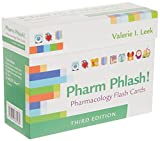
Focus on Pharmacology (8th Edition)
Focus on Nursing Pharmacology makes challenging concepts more approachable. Engaging learning features cultivate your clinical application, critical thinking and patient education capabilities. This updated 8th edition builds on your knowledge of physiology, chemistry and nursing fundamentals to help you conceptualize need-to-know information about each group of drugs.
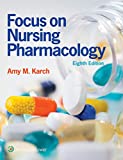
Pharmacology Made Incredibly Easy (Incredibly Easy! Series®)
Nursing pharmacology guide offers step-by-step guidance so you can grasp the fundamentals in enjoyable Incredibly Easy style. This is the perfect supplement to class materials, offering solid preparation for NCLEX® as well as a handy refresher for experienced nurses. Colorfully illustrated chapters offer clear, concise descriptions of crucial nursing pharmacology concepts and procedures.
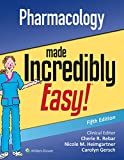
Lehne’s Pharmacology for Nursing Care (11th Edition)
The Eleventh Edition of Lehne’s Pharmacology for Nursing Care provides a thorough understanding of key drugs and their implications for nursing care. This text, written by renowned nursing educators, helps you comprehend and apply pharmacology principles. A clear and engaging writing style simplifies complex concepts, making even the most challenging pharmacology content enjoyable. We recommend this book if you want a comprehensive nursing pharmacology guide.
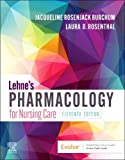
Nursing Drug Handbook
Nursing2023 Drug Handbook delivers evidence-based, nursing-focused drug monographs for nearly 3700 generic, brand-name, and combination drugs. With a tabbed, alphabetical organization and a “New Drugs” section, NDH2023 makes it easy to check drug facts on the spot.
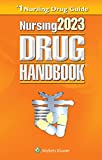
Pharmacology and the Nursing Process
The 10th edition of Pharmacology and the Nursing Process offers practical, user-friendly pharmacology information. The photo atlas contains over 100 unique illustrations and photographs depicting drug administration techniques. Updated drug content reflects the most recent FDA drug approvals, withdrawals, and therapeutic uses.
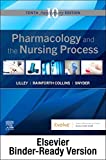
Mosby’s Pharmacology Memory NoteCards: Visual, Mnemonic, and Memory Aids for Nurses
The 6th edition of Mosby’s Pharmacology Memory NoteCards: Visual, Mnemonic, & Memory Aids for Nurses incorporates illustrations and humor to make studying easier and more enjoyable. This unique pharmacology review can be utilized as a spiral-bound notebook or as individual flashcards, making it ideal for mobile study.
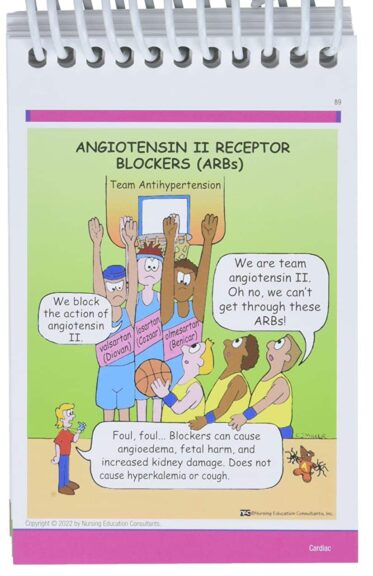
See Also
Here are other nursing pharmacology study guides:
- Nursing Pharmacology – Study Guide for Nurses
Our collection of topics related to nursing pharmacology - Pharmacology Nursing Mnemonics & Tips
These nursing mnemonics aim to simplify the concepts of pharmacology through the use of a simple, concise guide. - Generic Drug Name Stems Cheat Sheet
Learn about these generic drug name stems to help you make sense of drugs easier! - Common Drugs and Their Antidotes
A guide to drug antidotes that nurses should be familiar about. - IV Fluids and Solutions Guide & Cheat Sheet
Get to know the different types of intravenous solutions or IV fluids in this guide and cheat sheet. - Drug Dosage Calculations NCLEX Practice Questions (100+ Items)
Care to take the challenge? This quiz aims to help students and registered nurses alike grasp and master the concepts of medication calculation.
Drug Guides NEW!
Individual drug guides and nursing considerations for the most common medications used in nursing pharmacology:
- Acetaminophen (Tylenol)
- Aspirin
- Atorvastatin (Lipitor)
- Enoxaparin (Lovenox)
- Furosemide (Lasix)
- Gabapentin
- Hydromorphone (Dilaudid)
- Lisinopril
- Metoprolol
- Morphine
Gastrointestinal System Drugs
Respiratory System Drugs
- Antihistamines
- Bronchodilators and Antiasthmatics
- Decongestants
- Expectorants and Mucolytics
- Inhaled Steroids
- Lung Surfactants
Endocrine System Drugs
- Adrenocortical Agents
- Antidiabetic Agents
- Glucose-Elevating Agents
- Hypothalamic Agents
- Insulin
- Parathyroid Agents: Bisphosphonates, Calcitonins
- Pituitary Drugs
- Sulfonylureas
- Thyroid Agents
Autonomic Nervous System Drugs
- Adrenergic Agonists (Sympathomimetics)
- Adrenergic Antagonists (Sympatholytics)
- Anticholinergics (Parasympatholytics)
- Cholinergic Agonists (Parasympathomimetics)
Immune System Drugs
Chemotherapeutic Agents
- Anthelmintics
- Anti-Infective Drugs
- Antibiotics
- Antifungals
- Antineoplastic Agents
- Antiprotozoal Drugs
- Antiviral Drugs
Reproductive System Drugs
Nervous System Drugs
- Antidepressants
- Antiparkinsonism Drugs
- Antiseizure Drugs
- Anxiolytics and Hypnotic Drugs
- General and Local Anesthetics
- Muscle Relaxants
- Narcotics, Narcotic Agonists, and Antimigraine Agents
- Neuromuscular Junction Blocking Agents
- Psychotherapeutic Drugs
Cardiovascular System Drugs
References and Sources
References and sources for this pharmacology guide for Antiprotozoal Drugs:
- Karch, A. M., & Karch. (2011). Focus on nursing pharmacology. Wolters Kluwer Health/Lippincott Williams & Wilkins. [Link]
- Katzung, B. G. (2017). Basic and clinical pharmacology. McGraw-Hill Education.
- Lehne, R. A., Moore, L. A., Crosby, L. J., & Hamilton, D. B. (2004). Pharmacology for nursing care.
- Smeltzer, S. C., & Bare, B. G. (1992). Brunner & Suddarth’s textbook of medical-surgical nursing. Philadelphia: JB Lippincott.
